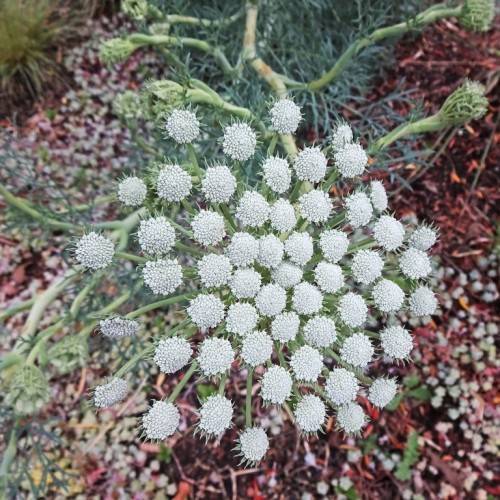
moon carrot
Seseli gummiferum
Cycle:
Herbaceous Perennial
Watering:
Minimum
Hardiness Zone:
5 - 9
Flowers:
Flowers
Sun:
Full sun
Leaf:
Yes
Growth Rate:
Low
Maintenance:
Low
Salt Tolerant:
Yes
watering
Watering Moon Carrots: Moon carrot (Seseli gummiferum) is a low water-demand plant, meaning it doesn't require frequent irrigation. To keep the soil moist, provide your Moon Carrots with 1 to 2 inches of water per week. Water Moon Carrots at their roots as to avoid moisture on the leaves, which might cause fungal diseases. During the growing season, which is typically during the summer months, water the plants more often. Make sure to avoid overwatering, as excessive water can cause root rot. Additionally, make sure that the soil is allowed to dry out between watering to reduce the chances of fungal disease and pest infestations.
sunlight
Moon carrot (Seseli gummiferum) is a member of the Parsley family and needs a moderate amount of sunlight to thrive. Generally, it requires at least 4-5 hours of full or partial sunlight per day. If planted outside, the plant should be placed in a location that receives full sun for at least part of the day. When grown indoors, moon carrot should be placed near a sunny window. They prefer bright, direct sunlight which should be filtered with a sheer white curtain and kept at least 6 inches away from the window glass. It is important to note that moon carrot will benefit from a little afternoon shade during especially hot summer days.
pruning
Moon carrot (Seseli gummiferum) should be pruned back to the ground after flowering has finished in late summer. Depending on the desired size and shape, some selective pruning may also be done before flowering begins in late spring. To maintain a healthy shape and encourage abundant flowering, remove dead or broken stems in the early spring and remove up to a third of the oldest wood in the center. This process can be repeated every 2 to 3 years.
